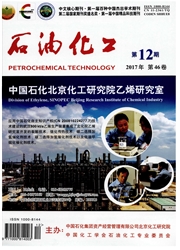

 中文摘要:
中文摘要:
酸化是解除碳酸盐岩储层水平井伤害的重要手段,目前其进酸模型都基于均质储层,而忽略了储层本身非均质性的影响。碳酸盐岩非均质性强,酸液更容易进入阻力较小区域反应溶蚀,水平段进酸分布必然受到影响。因此根据流体在水平段的变质量流动,和酸液进入非均质地层的反应溶蚀,考虑了钻井污染与酸液推进,建立了非均质碳酸盐岩水平井酸化模型,并分析了注酸时间、注酸排量与层间非均质性的影响。结果表明:随着注酸时间的增加,酸液分布在水平段的差异逐渐增大,趾部的酸化效果逐渐好于根部;随着注酸排量的增加,水平段进酸分布几乎不变,而蚓孔在大排量注酸时更为发育;低渗带的存在导致酸液更多的进入非低渗带区域,在靠近根部的低渗带主要呈面溶蚀状态,在靠近趾部的低渗带能够发育较短蚓孔。
 英文摘要:
英文摘要:
Acidizing is an important measure to eliminate near wellbore damage of horizontal well in carbonate reservoir. At pres- ent, the acidizing model is based on heterogeneous reservoir, and the impacts of heterogeneity on reservoir are neglected. Having strong heterogeneity, acidizing fluid can easily flow into small resistance area and affect acid distribution which flows from horizon- tal wellbore to formation. According to variable mass flow in horizontal section and corrosion effects of acid fluid into heterogeneous formation, by the consideration of drilling damage and acid advancing, acid model of horizontal wells in heterogeneous carbonate rocks was established and the effects of acid injection time, acid injection displacement and interlayer heterogeneity were analyzed. The results show that, as the increase of acid injection time, acid distribution variation along the horizontal wellbore increase, and the acidizing result of toe area is better than heel area, in addition, as the increase of acid injection amount, acid distribution along the horizontal wellbore is almost the same, and wormholes are more developed in large acid injection discharge rate. The low perme- ability area leads to more acid fluid flow into other area, furthermore, in low permeability area, face dissolution pattern can be ob- served near the heel, and short wormholes are developed near the toe.
 同期刊论文项目
同期刊论文项目
 同项目期刊论文
同项目期刊论文
 期刊信息
期刊信息
